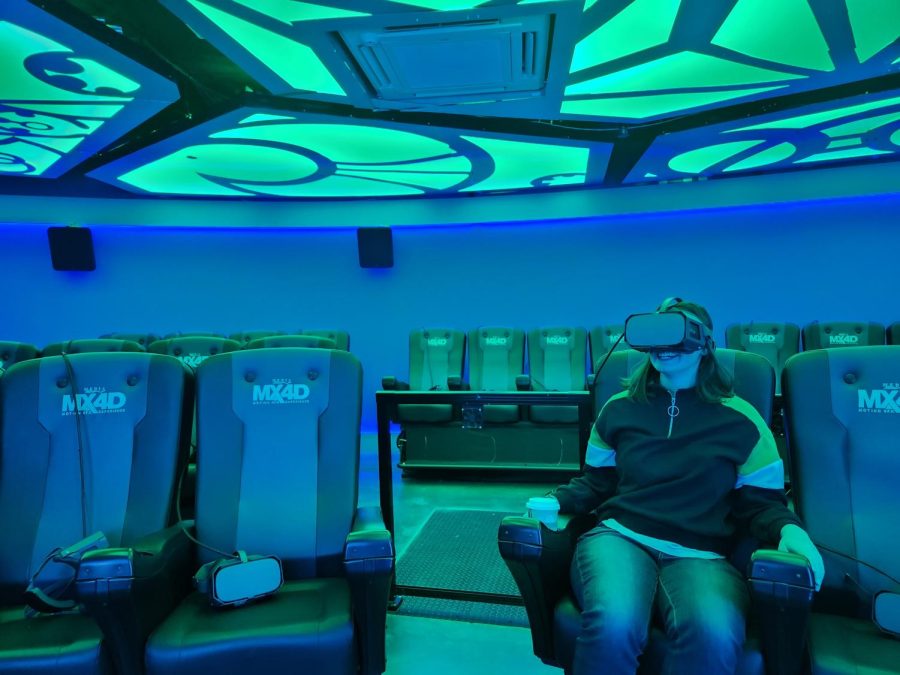Uncovering the Mysteries of the Deep at the EECO Voyager
November 11, 2022
Ever since the first appearance of the strange, futuristic structure outside of the Loveland Living Planet Aquarium, guests have observed it with curiosity and confusion. The structure was originally used as the stage for U2’s worldwide 360° tour, which lasted two full years. It was purchased in July 2020 by the aquarium to live out the rest of its days as the Ecosystem Exploration Craft & Observatory, also known as the EECO Voyager.
Underneath the stage at the EECO Voyager is a state-of-the-art virtual reality (VR) experience that takes guests under the sea and through rainforests. In terms of first impressions, the atmosphere was perfect. Everything felt very futuristic, technological and professional. It was as if I were about to go on a research expedition. The fact that the staff inside were dressed like Star Trek crew members definitely elevated this feeling.
Ocean and Rainforest Explorations
There are two options in terms of experience. One is the Ocean Explorer, where guests can expect to have close encounters with fish, sea turtles, an octopus and even great white sharks. The other is the rainforest, in which guests fly through the air with fruit bats, crawl on the ground with a tarantula and are sniffed out by a jaguar.
There were times, particularly with the tarantula and the sharks, when the effect was immersive as a whole. However, with the way the footage was captured, there were also times when the environment felt more 2D than others. This doesn’t take away from the overall experience though, as the chairs move with the footage, there are smells pumped into the room and bursts of air at your feet to mimic environment changes.

Inspire to Explore and Discover
Informational bulletins pop up whenever a new creature is introduced, including the average size, weight, habitat and some interesting facts about said animal. This is a recurring theme not just through the experiences, but with the aquarium as a whole. Their mission is to “inspire people to explore, discover, and learn about Earth’s diverse ecosystems,” and they do just that.
At the end of the Ocean Explorer, guests are taken to a barren section of the Coral Triangle. The Coral Triangle is a tropical area around the northern part of Oceana that contains hundreds of coral species, many of which are endangered thanks to coral bleaching. Through VR, visitors are taken to a coral nursery in which marine biologists from the Living Planet Aquarium are collaborating with scientists from around the world to regrow the Triangle’s coral population.
A Mission to Educate
Having an aquarium in a land-locked state has been a controversial topic for years among Utahns, according to Associate Director of Marketing and Public Relations Karmel Harper. However, she stresses the importance of having an aquarium in the middle of a desert. She wants people to be educated on how they can do their part to save sea life, despite being thousands of miles away from the closest ocean.
The Living Planet Aquarium is a non-profit organization and relies on donations and ticket purchases to expand its educational programs and animal care. It is AZA Accredited, something less than 20% of animal exhibitors have achieved, meaning it’s one of the most trustworthy and well-kept aquariums in the country.
I asked Harper at the end of our visit if there was anything she wanted college students to know about the Living Planet Aquarium. “Come and learn,” she said. “Our mission is to educate.”








